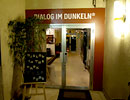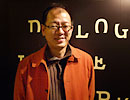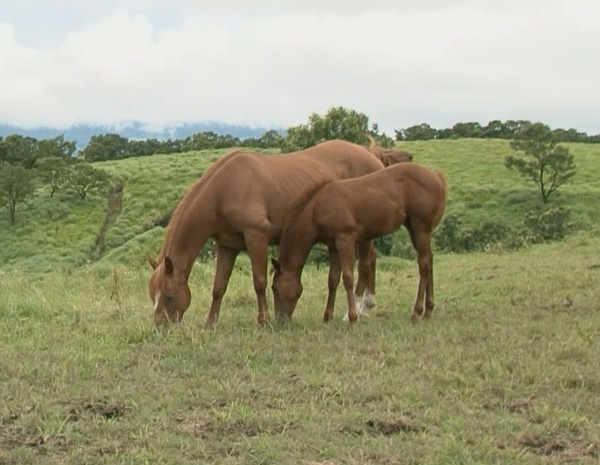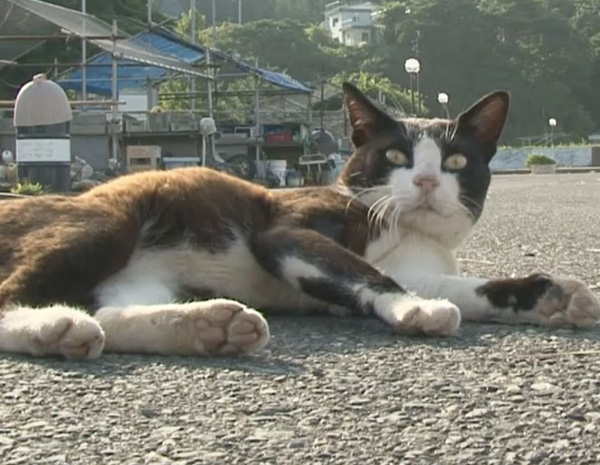- トップページ
- Fantastic Voyagers
- An experience of utter darkness
An experience of utter darkness
A visit to Dialog in the Dark
Dialog in the Dark is quite an amazing experience, they say.
Our two reporters visited the venue in Tokyo.

First impressions of the dark
Explorer Tsutsumi: Dialog of the Dark is getting quite famous all over the world. How was your experience of the darkness?
Explorer Yuasa: It really was pitch black. If it hadn’t been for the guide talking to us, it would have been very hard to get through, I think.
T: In this event, groups of seven people at a time wander around in total darkness. Even though the other people in the group were complete strangers that I met for the first time, a certain kind of friendship started growing in the dark, which I found fascinating. When sometimes we had no idea how to proceed, we would naturally reach out our hands to each other and somebody would call out “It’s this way!”
Y: This idea of speaking with one another is included in the title too, isn’t it. “Dialog in the dark.” If you stay quiet by yourself you won’t get anywhere.
T: It was an experience that the seven of us in our group shared.
Y: In my case, it felt like the seven of us where survivors from a plane that had crashed in the jungle. There is this cooperative relationship that naturally arises among people who have survived the same disaster.
T: Here, you have a guide and you know you will return to the ordinary world after an hour, so it’s perfectly safe to participate, but if I had been alone, I’m not at all sure I would have been able to get back, or even take a single step forward. It was very interesting that all the guides were people with visual disabilities. “If you have any problem, just call out,” they said, and we relied completely on them, even though they couldn’t see either. But in the darkness, the roles were reversed.
Sharpening your other, non-visual senses
Y: “So this is how it feels to not be able to see,” I realized. But as my body gradually got used to the darkness, I also felt a certain kind of nostalgia.
T: Nostalgia? In what sense?
Y: It was certainly nothing like a clear memory or anything, but it felt like I remembered being back in my mother’s womb, or the “temple circumambulations” I experienced as a child. You know, when you walk around and around under the eaves of the temple where it’s completely dark. All that came back to me.
T: Such an experience must be extremely thrilling for a child.
Y: A temple circumambulation is actually a kind of initiation rite, where the one who undergoes it is said to die once, and then be reborn once he or she passes through it. It’s a trick to experience the mother’s womb. That’s how I felt this time as well.
T: The main difference to a temple circumambulation would be that here, the route takes you through woods and meadows, stations and street corners, and various rooms filled with everyday objects, but you have to touch them or smell them to find them. Your hearing, touch, smell and taste, all your non-visual senses get activated to feel the world. One space I found particularly striking was the bar towards the end, where the bartender was shaking drinks. The beer there was really tasty.
Y: I also had a beer there, but was it any different than usual?
T: Maybe with the lack of visual information, my taste buds had really become sharper, or perhaps it was because I drank it very slowly, one mouthful at the time.
Y: One of the participants in my group exclaimed how miraculous it was that the bartender was able to pour drinks in complete darkness without spilling a single drop.
T: The bartender was blind too, wasn’t she? Come to think of it, that really is an amazing skill.
Impressions of an inverted world
Y: But for her, I’m sure it’s the most natural thing. Being unable to see must be like living in another world. It must be hard to live as a blind person in today’s world, which is totally based on the notion that everybody can see as a matter of course. That’s what I realized when I stumbled in the dark at the station platform and almost fell down on the tracks. I was scared stiff.
T: I wonder what it would be like to live in a different world.
Y: As for me, I’m a very visually oriented person, so when I heard the instructions of the guide, or when my fellow participants said something, I thought about the meaning of those words and directions in order to create a visual hypothesis about the space in front of me.
T: That means you wouldn’t have been able to proceed at all without hearing what the others said. I think you also have to try to sniff out your position with your nose, or listen to the reflections of your own voice.
Y: Exactly. Until you get used to doing such things, you’re paralyzed in the dark. But could mobilizing all your non-visual senses really be a step towards life in a totally different world?
T: Everyone will have their own individual impressions of their experience of Dialog in the Dark, but I think it’s OK to just take what you felt and let those emotions grow over time.
Y: Discussing your impressions with other participants can also be a way to make new discoveries. There should also be a “dialog out of the dark,” as it were.
T: In this event, they teach you how to use a cane, a white stick like the ones that visually impaired people use. Without that cane it would have been really difficult to wander around in the dark. Humans walk on their two legs, but in total darkness, that is impossibly dangerous and we would soon find ourselves crawling on the ground on all fours. Just like animals. When you walk on four legs, you can use your hind legs to support your body, while groping in front of you with your forelegs. Animals also have their noses and ears in front and close to the ground, perhaps in order to better be able to perceive faint odors and sounds.
Y: Indeed, so the cane functions as a foreleg. So if you, Explorer Tsutsumi, started living on all fours, perhaps you would be able to see a new world!
Expressions of gratitude from participants
“This is not simply a mock experience of the world of the visually impaired. Rather, I believe people can make new discoveries by sharpening their other senses in environments where there is no visual information,” says Shinsuke Kanai, CEO of Dialog in the Dark, Japan. “We firmly teach our guides and other staff never to give instructions like ‘Here you can feel like this.’”
The inventor of Dialog in the Dark, Dr. Andreas Heinecke, has laid down three basic rules that must be followed by new installations, but the rest is up to the local site.
・It must be perfectly dark.
・Visitors should enter in small groups.
・All guides should be visually impaired people
Originally from Germany, Dialog in the Dark can now be experienced at venues all over the world, and each venue includes their own ideas. “We wanted to use a design suited for Japan. If the event is held in other areas of the country, adding a local flavor is also possible,” says Mr. Kanai.
Many visitors come up with new ideas and suggestions as well. Apparently somebody said, “I’d like to feel the natural outdoor wind blowing in the darkness.” “It’s a really fascinating idea, but unfortunately there are certain restrictions on what is possible in the actual event space. But we’ll see what we can do.”
After the event, as the visitors are filling in a questionnaire, their guide comes back to say goodbye. It is striking to see how many participants struggle to express their as-yet undigested and unarticulated emotions, but in the end, almost everybody says “thank you very, very much.”
[DIALOG IN THE DARK]
Originally devised in 1988 by Dr. Andreas Heinecke in Germany, Dialog in the Dark is a workshop-style exhibition that lets visitors experience various environments and situations from everyday life in total darkness, where they have to rely on their other senses than their eyes. So far, it has been presented in over 30 countries and at more than 160 sites all over the world, and has been experienced by over 7 million visitors.
The first event in Japan was in 1999, and it’s been held every year since then. For each time, its reputation grows so that tickets are often sold out long in advance. In 2005, Dialog in the Dark was awarded the Good Design Award.

Shinsuke Kanai, CEO of Dialog in the Dark, Japan




